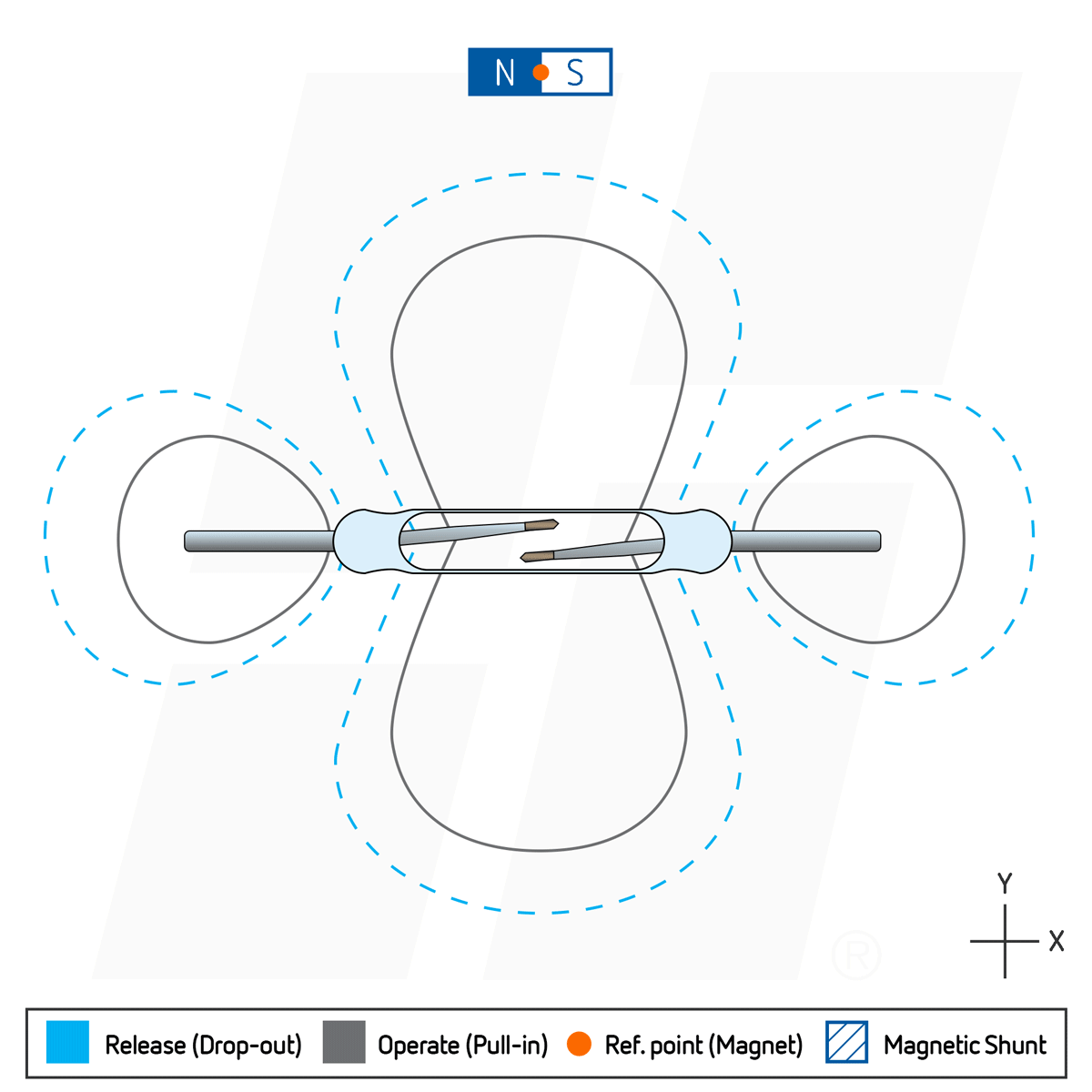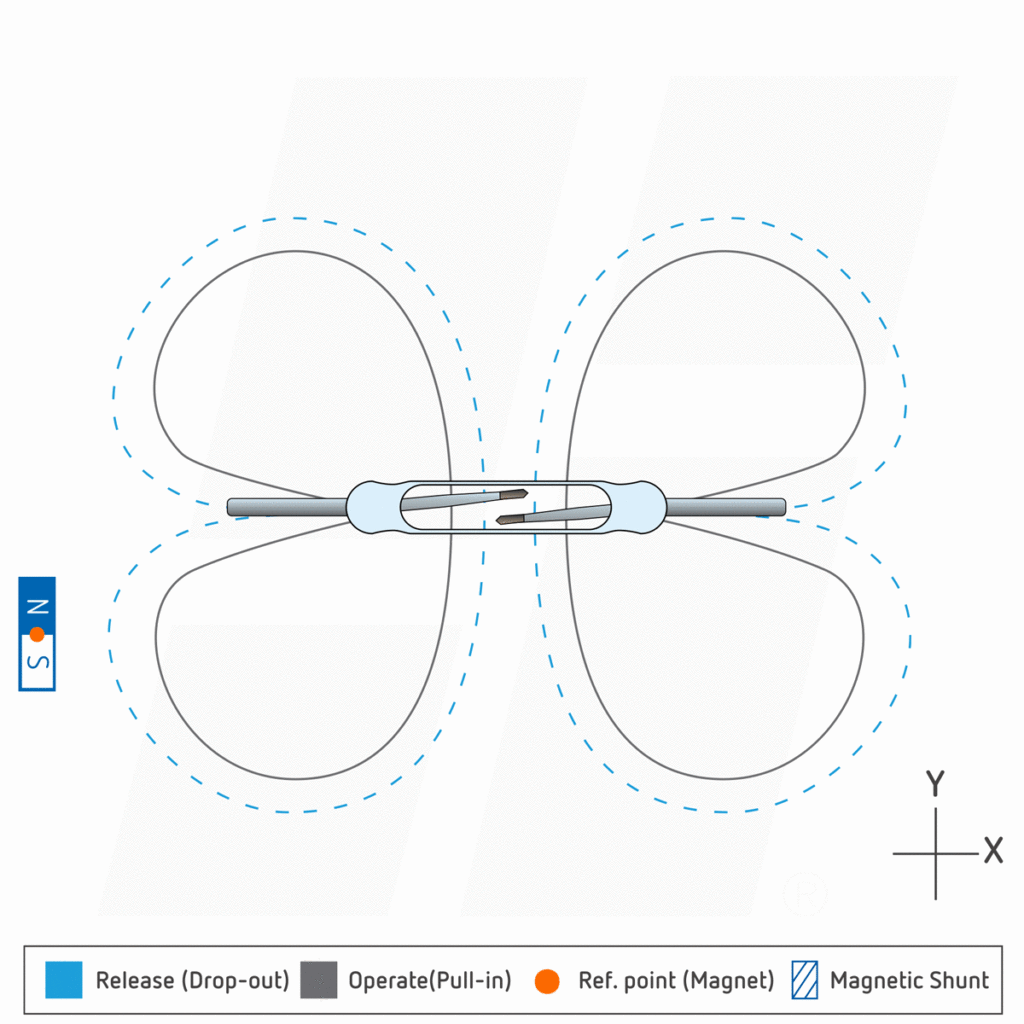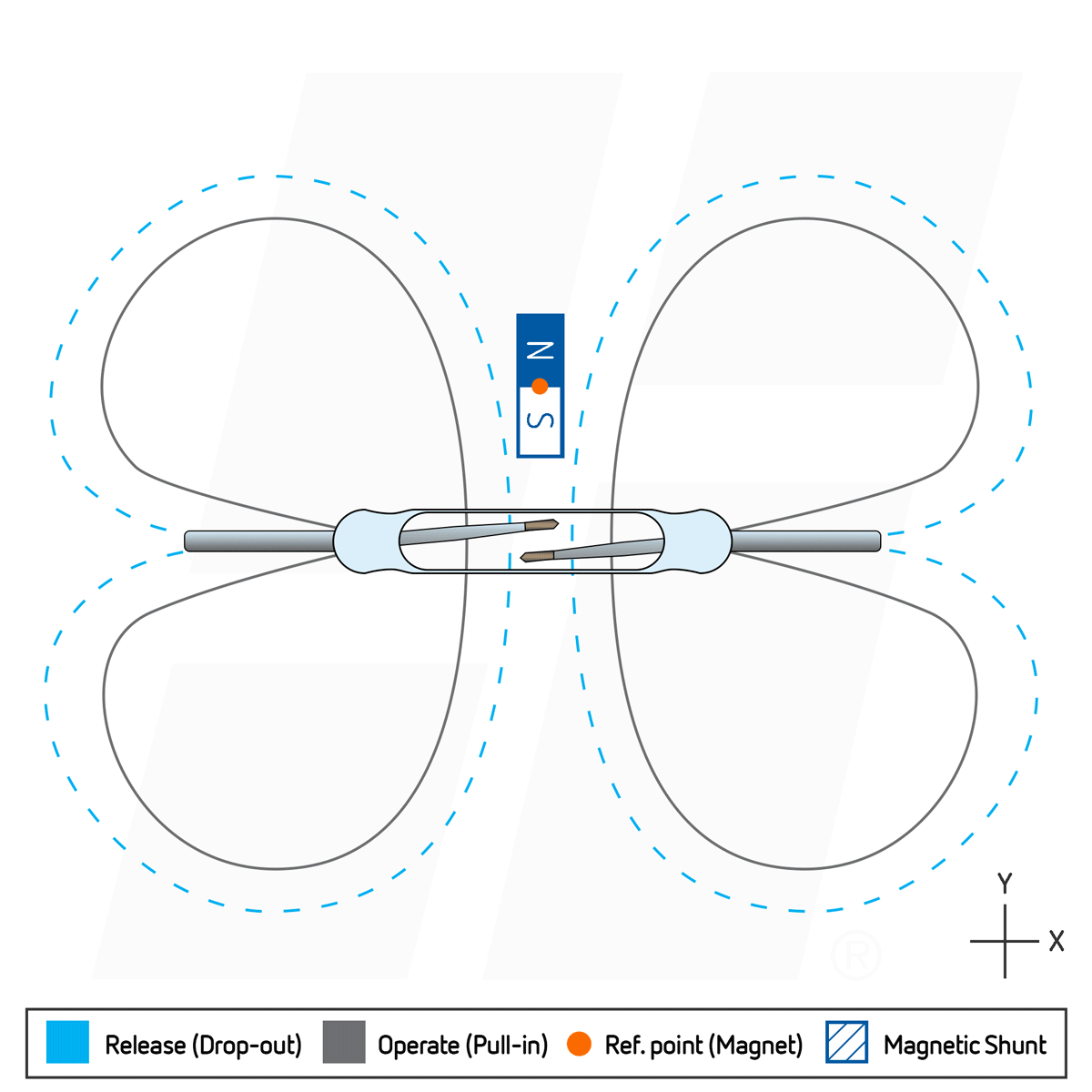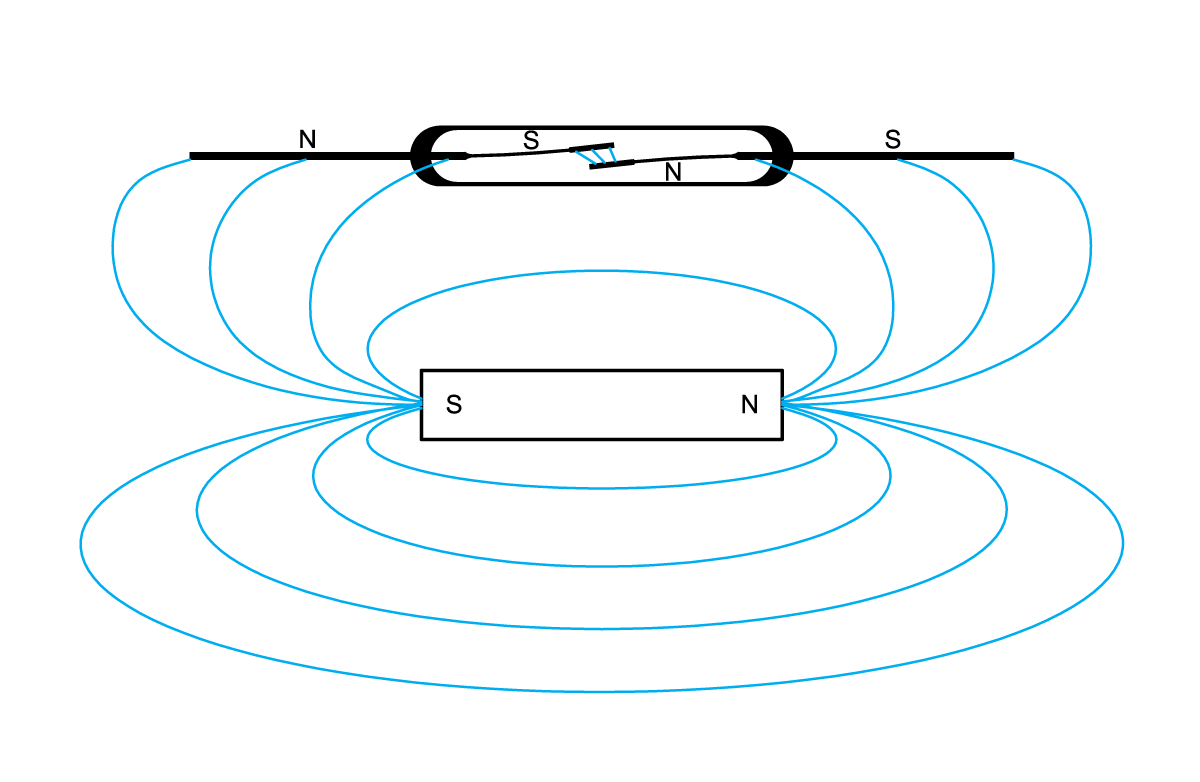“Principles of magnet interactions play an important role in the activation of the reed switches opening and closing.”
If there are particular areas you need help with, feel free to skip to any of the following sections:
The Basic Principles of Magnet Interactions
The Details of Magnet Interactions
How Interaction Impacts Function
Conclusion
Additional Resources
Sensing functions typically use a reed switch and a magnet for actuation. The magnet activates the reed switch to open and close when in proximity of the reed switch. Two things happen when the magnet is in proximity of the reed switch. First, 2 or 3 magnetic lobes are generated depending on how the magnet is positioned in relation to the reed switch. Second, the magnet puts off magnetic lines of flux causing the reed switch to then react by closing the contacts. When the contacts are open, no power is drawn. So reed switches can operate reliably over billions of operations.

The permanent magnet’s parallel position influences the center magnetic switch lobes. Positioning the magnet further away from the reed switch will focus on the center lobes and produce a single open and closure as the permanent magnet moves parallel to the plane of the reed switch.
The Basic Principles of Magnet Interactions
Reed switch and magnet interaction are a duo that can be used across many different applications. The magnet used will be different, depending on the specific application. There are multiple magnet specifications available on the market. Magnet specifications such as material makeup, dimensions, and geometries will all determine the environment it can be used in. Each different kind of magnet material has a different magnet force makeup as well as a different flux density. Furthermore, other factors like mounting position and other magnetic fields involved define the energy of the magnet. The most preferred and used forms of magnets are cylinders, rectangles, rings, and discs. Although, all magnets work similarly no matter the shape or size. Finally, a magnet can be magnetized for use in various ways as needed.
The Details of Magnet Interactions
Even though some functioning specifications that depend on the chosen magnet may change, the overall function of the magnet with the reed switch never really changes. A successful sensor application requires a few considerations. For example, the environmental temperature needs to be considered. High temperatures can cause irreversible damage and will have a heavy impact on the magnetic force and long-term stability. Magnet placement in the application is an important consideration. This will play a huge role in the overall function of how the reed switch will work.

This reed switch actuation example uses a normally open switch and 2-pole bar style permanent magnet. The magnet is positioned perpendicular to the reed switch. The magnet moves parallel, along the X axis influencing both outer magnetic lobes, resulting in multiple switch operations.
For more animated examples of reed switch and magnet actuation go to our magnet interaction page
How Interaction Impacts Function
A few factors influence the reed switch and magnet interaction – starting with the type, size, and strength of the magnet and followed by the magnetic orientation and location relative to the reed switch. They play an important role in the activation of the reed switches opening and closing. In addition to that, the size of the lobes of magnetic sensitivity rays from the reed switch will vary depending on the strength of the magnet and the sensitivity of the reed switch. Proper orientation of the magnet with the reed switch is also important to consider when meeting the application requirements across the board.
Conclusion
Magnets have unique properties that allow us to operate reed switch sensors without drawing any power. Drawing no power in this power-hungry world is a true asset. The Standex team is standing by to fill the ever-changing needs of customers across industries, and across the world, through our Partner, Solve, Deliver® approach. Get in touch with our team to learn more about our carefully engineered solutions.
Additional Resources
For more information on how a reed switch operational characteristics download the whitepaper

















